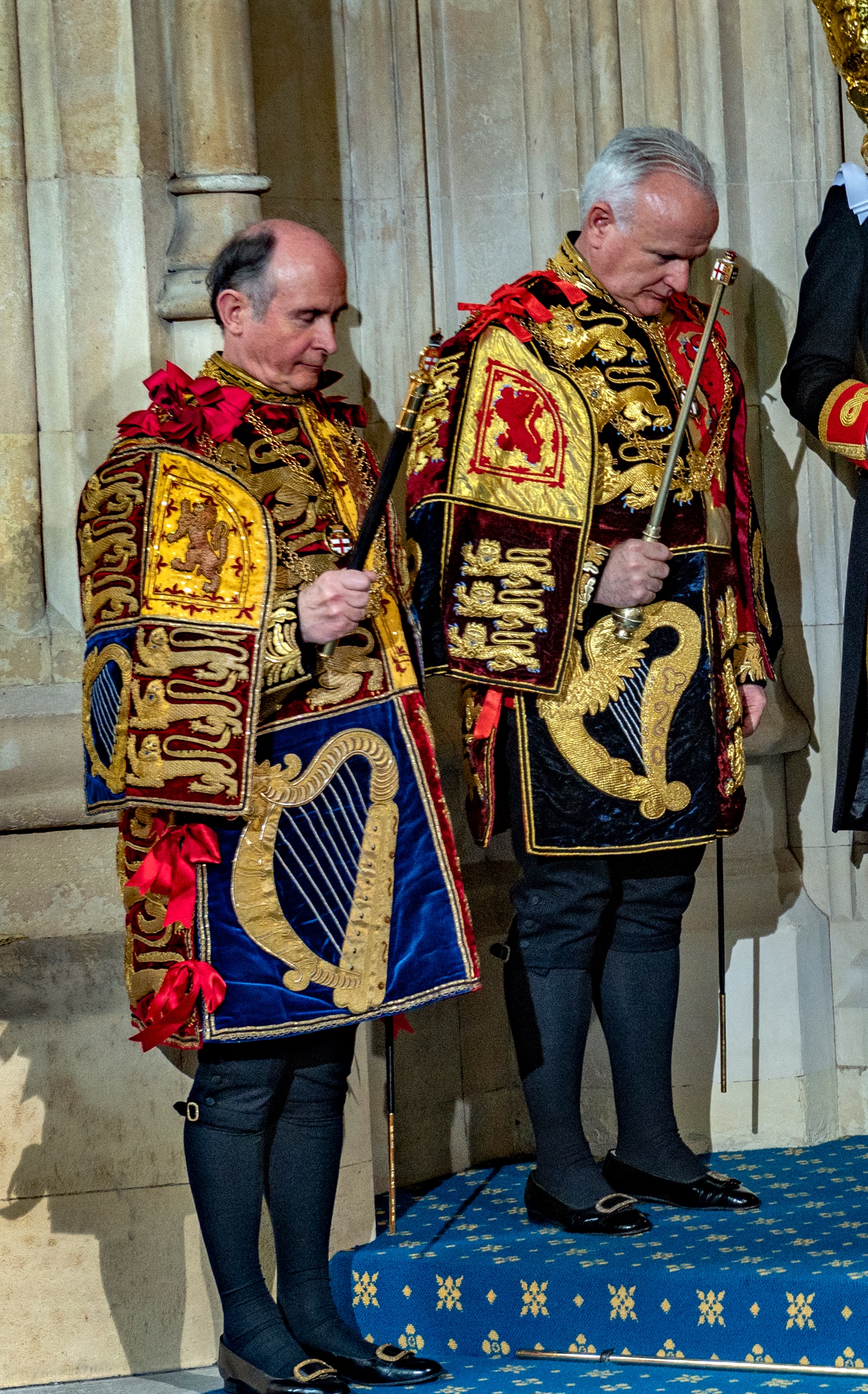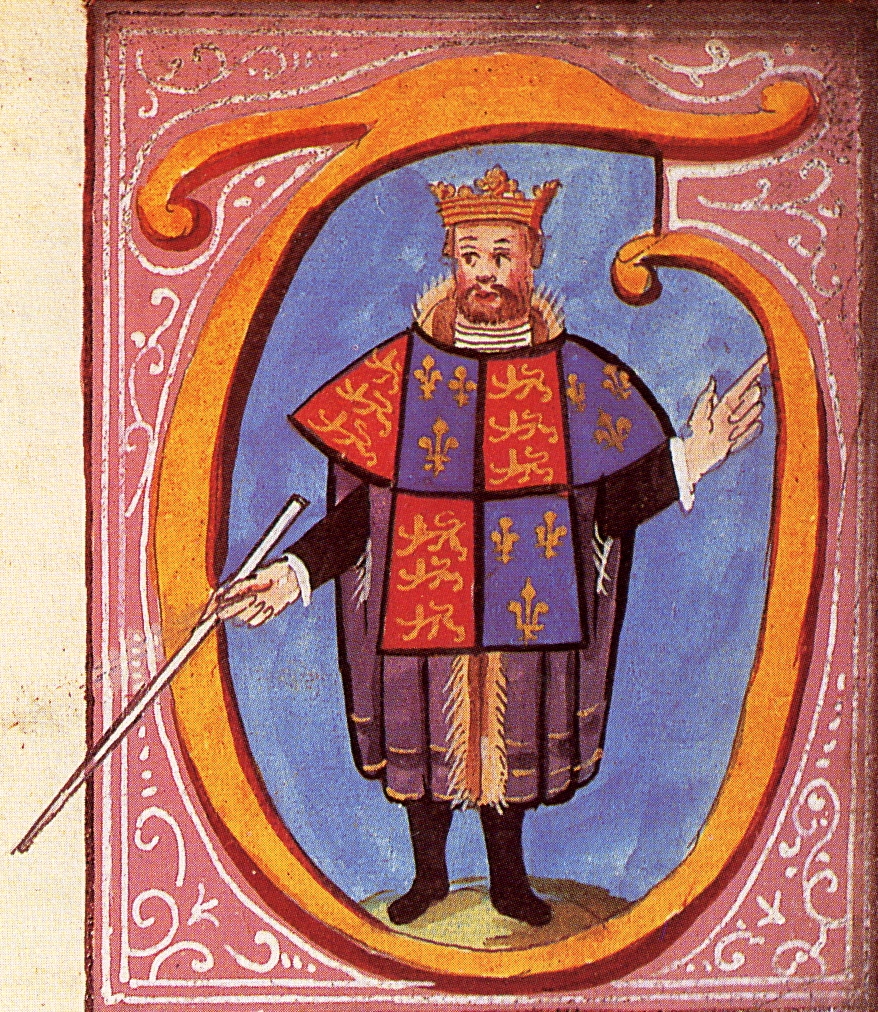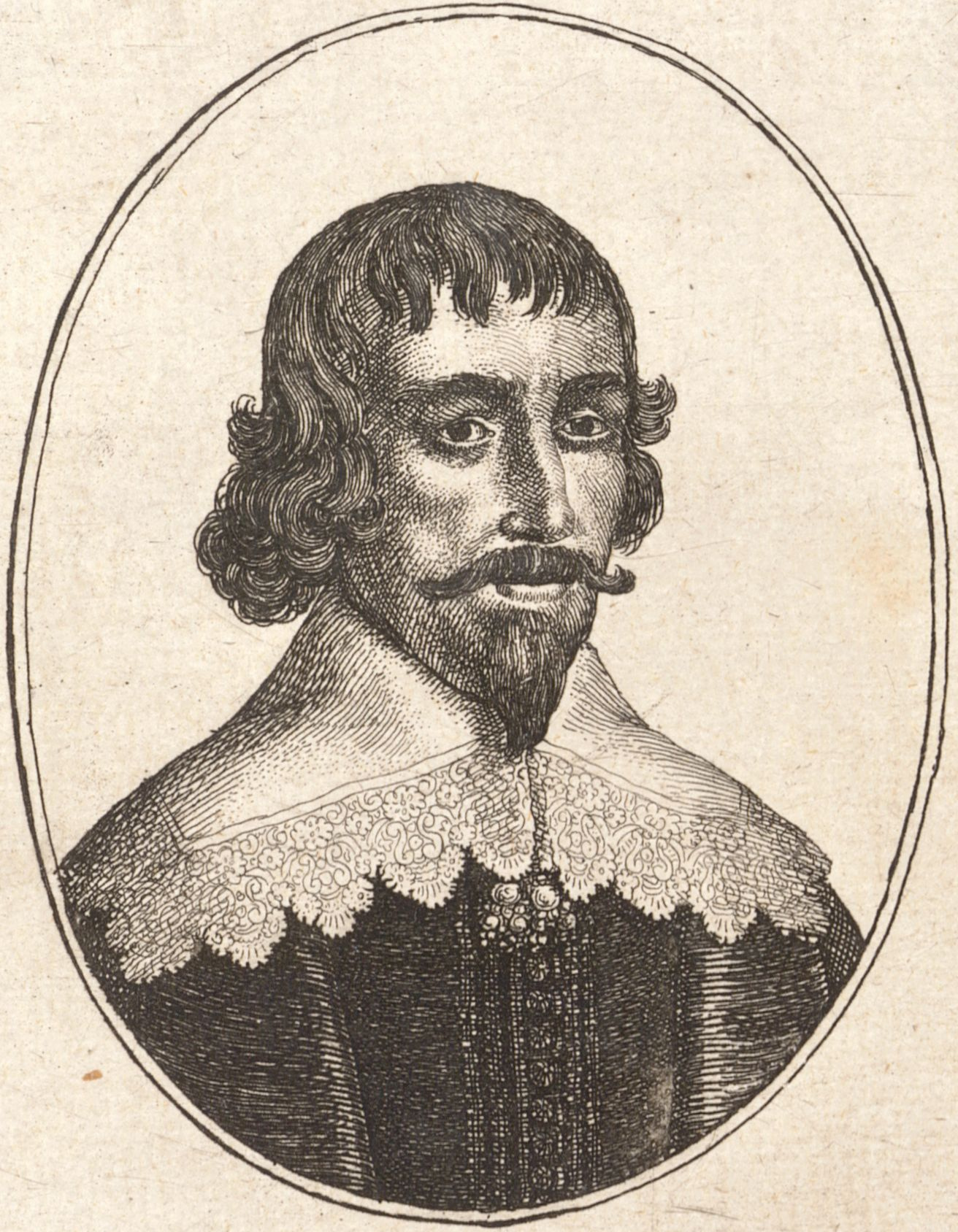|
William Ryley
William Ryley (died 1667) was an officer of arms at the College of Arms in London. He began his career as a clerk at the record office in the Tower of London under Sir John Borough, Garter king of arms. He entered the College of Arms as Rouge Rose pursuivant in 1630 and was promoted to Bluemantle pursuivant in 1633. As Bluemantle he was involved in the visitations of Buckinghamshire and Oxfordshire in 1634. In 1638 he was admitted to Lincoln's Inn and he was appointed Lancaster herald in 1641. He accompanied Charles I to Oxford in 1641, but was sent back to London to look after the records. In 1646 he was promoted to Norroy king of arms by Parliament, so he could marshal the state funeral of the Earl of Essex. In 1659 he was appointed Clarenceux king of arms, but was demoted at the Restoration to his pre-war status of Lancaster herald. When William Prynne was appointed keeper of the records, Ryley and his son William (d. 1675) were named as deputies. He died in July 1667 and was ... [...More Info...] [...Related Items...] OR: [Wikipedia] [Google] [Baidu] |
Officer Of Arms
An officer of arms is a person appointed by a sovereign or Sovereign state, state with authority to perform one or more of the following functions: * to control and initiate coat of arms, armorial matters; * to arrange and participate in ceremonies of state; * to conserve and interpret heraldry, heraldic and genealogical records. By country The medieval practice of appointing heralds or pursuivants to the establishment of a Nobility, noble household is still common in European countries, particularly those in which there is no official heraldic control or Heraldic authority, authority. Such appointments are also still made in Scotland, where four Private officer of arms, private officers of arms exist. These appointments are all purely advisory. Canada Work completed by the Canadian Heraldic Authority is conducted by officers known as the herald of arms. The organization is led by the Herald Chancellor of Canada and the Chief Herald of Canada, the latter serving as the director ... [...More Info...] [...Related Items...] OR: [Wikipedia] [Google] [Baidu] |
College Of Arms
The College of Arms, or Heralds' College, is a royal corporation consisting of professional Officer of Arms, officers of arms, with jurisdiction over England, Wales, Northern Ireland and some Commonwealth realms. The heralds are appointed by the Monarchy of the United Kingdom, British Sovereign and are delegated authority to act on behalf of the Crown in all matters of heraldry, the granting of new coat of arms, coats of arms, Genealogy, genealogical research and the recording of pedigree chart, pedigrees. The College is also the official body responsible for matters relating to the flying of flags on land, and it maintains the official registers of flags and other national symbols. Though a part of the Royal Household of the United Kingdom, the College is self-financed, unsupported by any public funds. Founded by royal charter in 1484 by King Richard III of England, Richard III, the College is one of the few remaining official heraldic authority, heraldic authorities in Europe. ... [...More Info...] [...Related Items...] OR: [Wikipedia] [Google] [Baidu] |
Sir John Borough
Sir John Borough, sometimes Burroughs, (died 21 October 1643) was the Garter Principal King of Arms 1633-43. Life He was grandson of William Borough, of Sandwich, Kent, by the daughter of Basil Gosall, of Nieuwkerk, Brabant, and son of John Borough, of Sandwich, by his wife, daughter of Robert Denne, of Dennehill, Kent. He received a classical education, and afterwards studied law at Gray's Inn. In 1622 he was at Venice, and from that city he addressed several letters to Sir Robert Bruce Cotton, chiefly about the purchase of manuscripts, subscribing himself ‘Your faithful servant and poore kinsman’. He was appointed in 1623 Keeper of the Records in the Tower of London. In June of the same year, by the favour of the earl marshal, to whom he was secretary, he was sworn herald-extraordinary by the title of Mowbray, and on 23 December following he was created Norroy king of arms, at Arundel House in the Strand, in the place of Sir Richard St. George, who was created Clarenceux ... [...More Info...] [...Related Items...] OR: [Wikipedia] [Google] [Baidu] |
Pursuivant
A pursuivant or, more correctly, pursuivant of arms, is a junior officer of arms. Most pursuivants are attached to official heraldic authorities, such as the College of Arms in London or the Court of the Lord Lyon in Edinburgh. In the mediaeval era, many great nobles employed their own officers of arms. Today, there still exist some private pursuivants that are not employed by a government authority. In Scotland, for example, several pursuivants of arms have been appointed by Clan Chiefs. These pursuivants of arms look after matters of heraldic and genealogical importance for clan members. Some Masonic Grand Lodges have an office known as the Grand Pursuivant. It is the Grand Pursuivant's duty to announce all applicants for admission into the Grand Lodge by their names and Masonic titles; to take charge of the jewels and regalia of the Grand Lodge; to attend all meetings of the Grand Lodge, and to perform such other duties as may be required by the Grand Master or presiding off ... [...More Info...] [...Related Items...] OR: [Wikipedia] [Google] [Baidu] |
Bluemantle Pursuivant
Bluemantle Pursuivant of Arms in Ordinary is a junior officer of arms of the College of Arms in London. The office is reputed to have been created by King Henry V to serve the Order of the Garter, but there is no documentary evidence of this. There is, however, mention of an officer styled Blewmantle going to France in 1448. The first Bluemantle to be mentioned by name is found in a record from around 1484. The badge of office, probably derived from the original blue material of the Order of the Garter, is blazoned as ''A Blue Mantle lined Ermine cords and tassels Or''. The current Bluemantle Pursuivant is Mark John Rosborough Scott who was appointed 13 June 2019. Holders of the office See also * Heraldry * Officer of Arms References ;Citations: ;Bibliography: * ''The College of Arms, Queen Victoria Street : being the sixteenth and final monograph of the London Survey Committee'', Walter H. Godfrey, assisted by Sir Anthony Wagner, with a complete list of the officers ... [...More Info...] [...Related Items...] OR: [Wikipedia] [Google] [Baidu] |
Lincoln's Inn
The Honourable Society of Lincoln's Inn is one of the four Inns of Court in London to which barristers of England and Wales belong and where they are called to the Bar. (The other three are Middle Temple, Inner Temple and Gray's Inn.) Lincoln's Inn, along with the three other Inns of Court, is recognised as being one of the world's most prestigious professional bodies of judges and lawyers. Lincoln's Inn is situated in Holborn, in the London Borough of Camden, just on the border with the City of London and the City of Westminster, and across the road from London School of Economics and Political Science, Royal Courts of Justice and King's College London's Maughan Library. The nearest tube station is Holborn tube station or Chancery Lane. Lincoln's Inn is the largest Inn, covering . It is believed to be named after Henry de Lacy, 3rd Earl of Lincoln. History During the 12th and early 13th centuries, the law was taught in the City of London, primarily by the clergy. Then two ... [...More Info...] [...Related Items...] OR: [Wikipedia] [Google] [Baidu] |
Lancaster Herald Of Arms In Ordinary
Lancaster Herald of Arms in Ordinary is an England, English officer of arms at the College of Arms in London. The title of Lancaster Herald first occurs in 1347 at Calais, and to begin with this officer was a servant to the noble house of Duchy of Lancaster, Lancaster. As a retainer of John of Gaunt (1377–1399) Lancaster was advanced to the rank of King of Arms, and was later promoted to the royal household of Henry IV of England, Henry IV (Gaunt's son), and made king of the northern province. This arrangement continued until 1464, when Lancaster reverted to the rank of herald. Since the reign of Henry VII of England, King Henry VII (1485–1509) Lancaster has been a herald in ordinary. The Heraldic badge, badge of office is a red rose of Lancaster, royally crowned. The office is currently vacant since the promotion of Robert Noel to Norroy and Ulster King of Arms in 2021. Holders of the office See also * Heraldry * Officer of Arms References ;Notes ;Citations ;Bibliograp ... [...More Info...] [...Related Items...] OR: [Wikipedia] [Google] [Baidu] |
Charles I Of England
Charles I (19 November 1600 – 30 January 1649) was King of England, Scotland, and Ireland from 27 March 1625 until Execution of Charles I, his execution in 1649. He was born into the House of Stuart as the second son of King James VI of Scotland, but after his father inherited the English throne in 1603, he moved to England, where he spent much of the rest of his life. He became heir apparent to the kingdoms of England, Scotland, and Ireland in 1612 upon the death of his elder brother, Henry Frederick, Prince of Wales. An unsuccessful and unpopular attempt to marry him to the Spanish Habsburg princess Maria Anna of Spain, Maria Anna culminated in an eight-month visit to Spain in 1623 that demonstrated the futility of the marriage negotiation. Two years later, he married the House of Bourbon, Bourbon princess Henrietta Maria of France. After his 1625 succession, Charles quarrelled with the Parliament of England, English Parliament, which sought to curb his royal prerogati ... [...More Info...] [...Related Items...] OR: [Wikipedia] [Google] [Baidu] |
Norroy And Ulster King Of Arms
Norroy and Ulster King of Arms is the Provincial King of Arms at the College of Heralds with jurisdiction over England north of the River Trent, Trent and Northern Ireland. The two offices of Norroy and Ulster were formerly separate. Norroy King of Arms is the older office, there being a reference as early as 1276 to a "King of Heralds beyond the Trent in the North". The name ''wikt:Norroy, Norroy'' is derived from the French meaning 'north king'. The office of Ulster Principal King of Arms for All-Ireland was established in 1552 by King Edward VI to replace the older post of Ireland King of Arms, which had lapsed in 1487. Ulster King of Arms was not part of the College of Arms and did not fall under the jurisdiction of the Earl Marshal, being the heraldic authority for the Kingdom of Ireland (the jurisdiction of the College of Arms being the Kingdom of England and Lord Lyon's Office that of the Kingdom of Scotland). Ulster was Registrar and King of Arms of the Order of St Pat ... [...More Info...] [...Related Items...] OR: [Wikipedia] [Google] [Baidu] |
Robert Devereux, 3rd Earl Of Essex
Robert Devereux, 3rd Earl of Essex, KB, PC (; 11 January 1591 – 14 September 1646) was an English Parliamentarian and soldier during the first half of the 17th century. With the start of the Civil War in 1642, he became the first Captain-General and Chief Commander of the Parliamentarian army, also known as the Roundheads. However, he was unable and unwilling to score a decisive blow against the Royalist army of King Charles I. He was eventually overshadowed by the ascendancy of Oliver Cromwell and Thomas Fairfax, and resigned his commission in 1646. Youth and personal life Robert Devereux was the son and heir of Robert Devereux, 2nd Earl of Essex, the courtier and soldier from the later reign of Queen Elizabeth I. His mother was Frances Walsingham (1567–1633), the only daughter of Sir Francis Walsingham, Elizabeth's spymaster. He was born at the home of his grandmother, Lady Walsingham, in Seething Lane, London. He was educated at Eton College and Merton College, ... [...More Info...] [...Related Items...] OR: [Wikipedia] [Google] [Baidu] |
Clarenceux King Of Arms
Clarenceux King of Arms, historically often spelled Clarencieux (both pronounced ), is an officer of arms at the College of Arms in London. Clarenceux is the senior of the two provincial kings of arms and his jurisdiction is that part of England south of the River Trent. The office almost certainly existed in 1420, and there is a fair degree of probability that there was a ''Claroncell rex heraldus armorum'' in 1334. There are also some early references to the southern part of England being termed Surroy, but there is not firm evidence that there was ever a king of arms so called. The title of Clarenceux is supposedly derived from either the Honour (or estates of dominion) of the Clare earls of Gloucester, or from the Dukedom of Clarence (1362). With minor variations, the arms of Clarenceux have, from the late fifteenth century, been blazoned as ''Argent a Cross on a Chief Gules a Lion passant guardant crowned with an open Crown Or''. Timothy Duke was appointed Clarenceux K ... [...More Info...] [...Related Items...] OR: [Wikipedia] [Google] [Baidu] |
William Prynne
William Prynne (1600 – 24 October 1669), an English lawyer, voluble author, polemicist and political figure, was a prominent Puritan opponent of church policy under William Laud, Archbishop of Canterbury (1633–1645). His views were presbyterian, but he became known in the 1640s as an Erastian, arguing for overall state control of religious matters. Early life Born at Swainswick, near Bath, Somerset, William Prynne was educated at Bath Grammar School and Oriel College, Oxford. He graduated as a BA on 22 January 1621, entered as a student of Lincoln's Inn in the same year, and was called to the bar in 1628. According to Anthony Wood, he was confirmed in his militant puritanism by the influence of John Preston, then a lecturer at Lincoln's Inn. In 1627 he published his first of over 200 works, a theological treatise titled ''The Perpetuity of a Regenerate Man's Estate''. This was followed in the next three years by three others attacking Arminianism and its teachers. In the ... [...More Info...] [...Related Items...] OR: [Wikipedia] [Google] [Baidu] |







